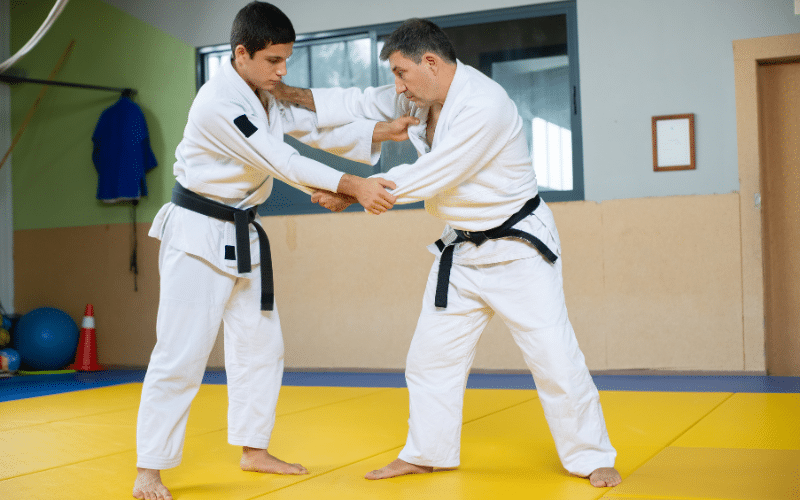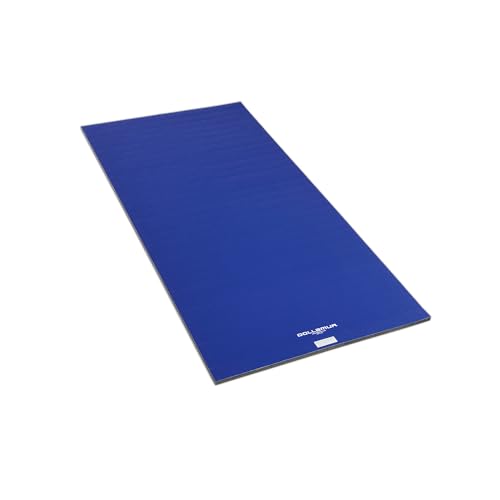Ready to grapple with what it takes to be a judo champion?
It’s not just about throws and holds; it’s the kit that keeps the fight fair and square!
With every swish of the Gi to the smackdown on the mat, let’s lock in on the judo essentials. Toss on your belt, it’s showdown time!

For Judokas:
- Judo Gi (uniform)
- Belt (colored according to rank)
- Mouthguard (optional for sparring)
- Knee Pads (optional for injury prevention)
For Coaches:
- Mats (Tatami) for Dojo
- First Aid Kit
- Instructional Materials and Rule Books
- Scoreboards (for competitions)
- Training Dummies (for technique practice)
For Facilities:
- Dojo (training hall) with Proper Matting (Tatami)
- Changing Rooms and Lockers
- Seating Area for Spectators (during competitions)
- Equipment Storage Area
Equipment for Judokas
#1 Judo Gi (uniform)
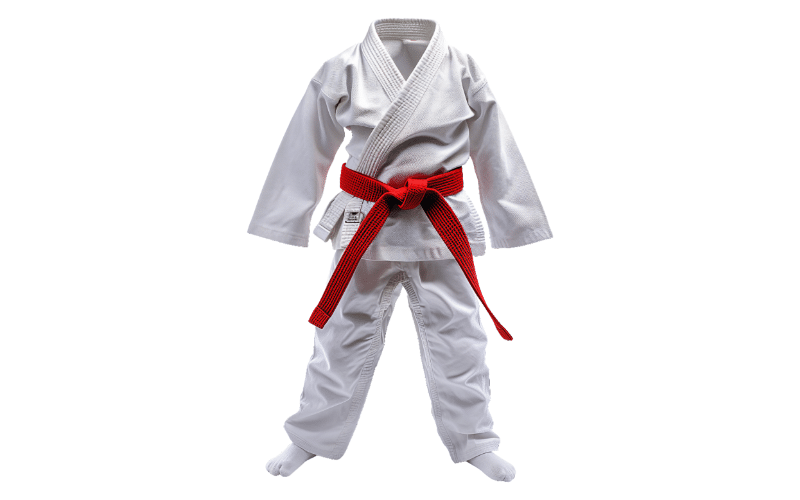
The judo gi is the traditional uniform worn by judokas and is designed to withstand the rigorous grappling and throwing techniques of the sport. Its heavy material aids in grip and serves as an extension of the practitioner in both offensive and defensive maneuvers.
#2 Belt (Obi)
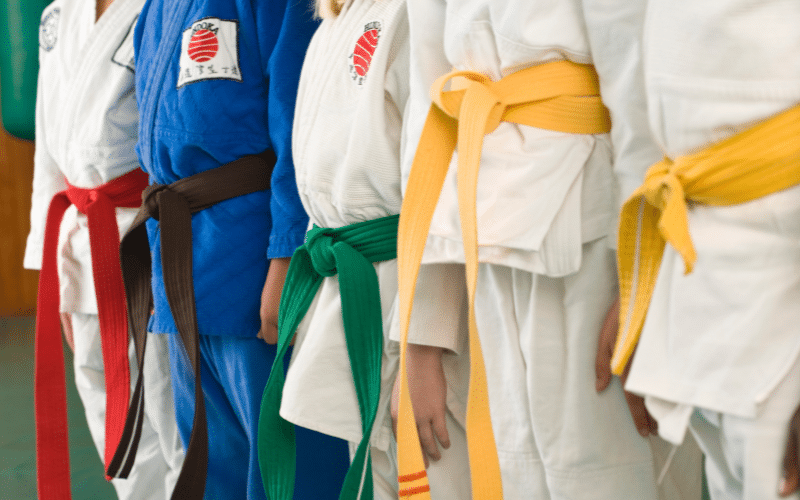
The belt signifies a judoka’s rank and is tied around the waist to secure the jacket of the gi. The color of the belt indicates the skill level of the practitioner, providing a visual representation of their progress and experience within Judo.
#3 Mouthguard
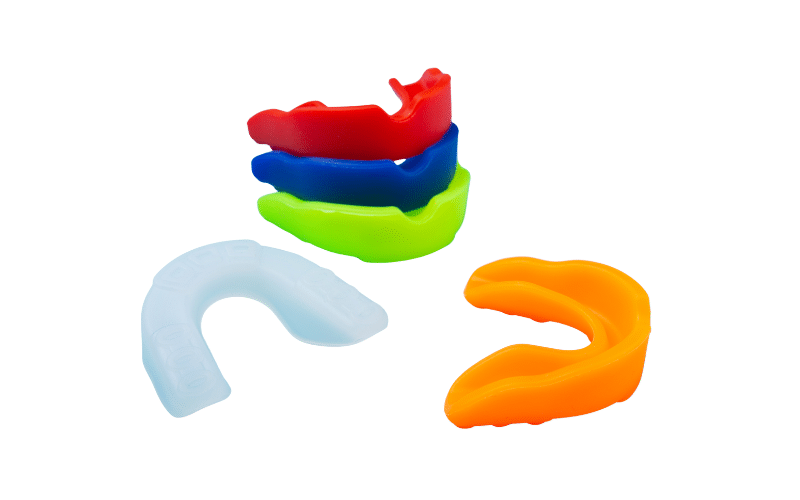
While optional, a mouthguard offers critical protection during sparring. It helps absorb the shock from accidental impacts, safeguarding the teeth and gums from injury and decreasing the risk of concussions, thus promoting safety in a sport involving close physical contact.
#4 Knee Pads

Knee pads are a protective measure employed by some judokas to prevent injuries. These pads cushion the knees during falls or when performing kneeling techniques, offering support and added safety for joint health over long-term practice.
Equipment for Judo Coaches
#1 Mats (Tatami)

Mats, or tatami, are essential for the safe practice of judo, cushioning falls and providing a suitable surface for training. They must meet specific standards to ensure a balance between appropriate grip and the capacity to absorb impact.
#2 First Aid Kit

A readily available first aid kit is vital for any sports coach, including judo, to handle minor injuries or emergencies. It ensures that coaches can provide immediate care to their athletes until professional medical treatment can be reached if needed.
#3 Instructional Materials and Rule Books
Coaches rely on instructional materials and rule books to structure learning and ensure compliance with judo principles and competition regulations. These resources are necessary for teaching correct techniques and conducting fair practices and matches.
#4 Scoreboards
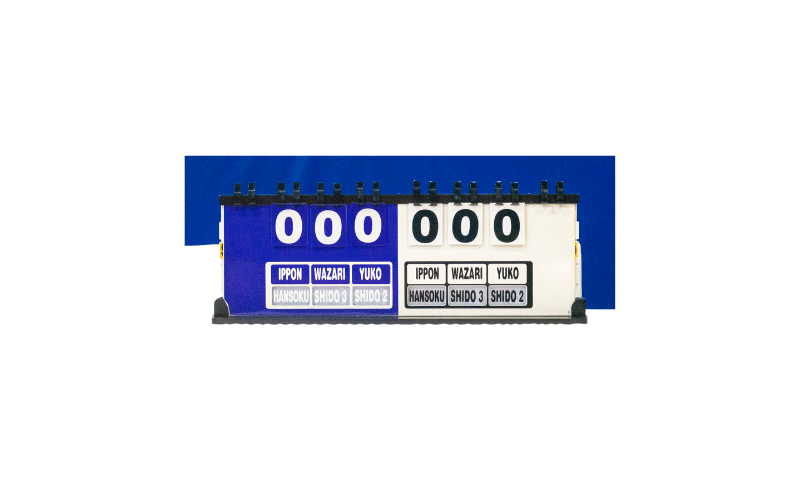
Scoreboards are critical for judo competitions, providing a clear and immediate display of scores, penalties, and time. This visibility is crucial for referees, coaches, competitors, and spectators to follow the progress and outcome of matches.
#5 Training Dummies
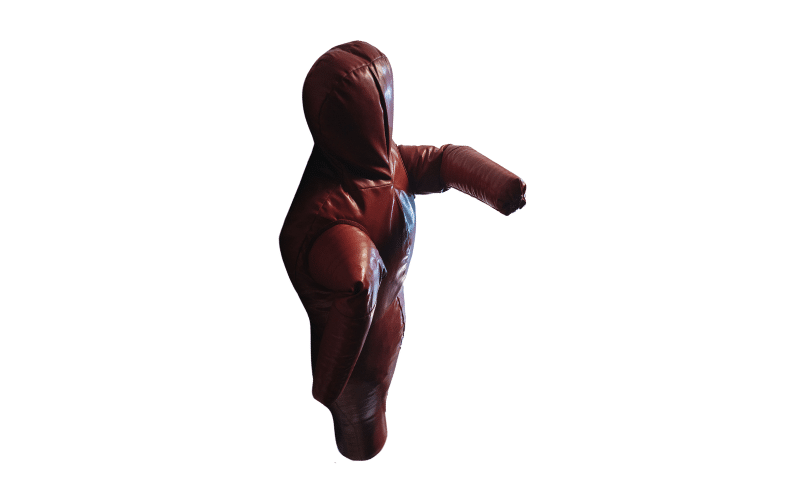
Training dummies are practical tools for coaches to teach judo techniques. They allow judokas to practice throws and holds with consistent resistance and without risking injury to a partner, particularly useful when learning new maneuvers.
Equipment for Facilities
#1 Dojo (Training Hall) with Proper Matting (Tatami)

A dojo provides a dedicated space for judo practitioners to train, complete with Tatami mats that cushion falls and minimize injury risk. The proper flooring is fundamental to judo, as it ensures safety and facilitates the execution of techniques, making it the cornerstone of any judo facility.
#2 Changing Rooms and Lockers
Changing rooms and lockers are essential for participant comfort and security. They offer a private area for athletes to change clothing before and after practice or competitions and secure storage for personal belongings, contributing to the overall functionality and professionalism of the judo facility.
#3 Seating Area for Spectators
A seating area for spectators is crucial during competitions, allowing family, friends, and judo enthusiasts to watch and support the athletes. Adequate spectator accommodations encourage community engagement and make events more accessible and enjoyable for everyone involved.
#4 Equipment Storage Area
An equipment storage area is vital to keep a judo facility organized and efficient. By providing a designated space for mats, training dummies, and other equipment, facilities can prolong the lifespan of their gear, facilitate quick setup for activities, and maintain a tidy environment conducive to training and competition.
Once you’re equipped, get inspired with some creative ideas for sharing your judo journey at Judo Instagram captions.

FAQ
What is the equipment you need to play Judo?
A judogi (Judo uniform) and a belt are the equipment you need to play Judo. This attire is designed to withstand the gripping and pulling that characterize Judo techniques.
What is the most important equipment in Judo?
The judogi is the most important equipment in Judo, as it is essential for both training and competition, allowing practitioners to perform a wide range of techniques effectively.
What is a recommended list of Judo equipment for beginners?
Here’s a recommended list of Judo equipment for beginners: a well-fitted judogi, a white belt, and comfortable zori or sandals to wear off the mat. Optional items include knee pads and a water bottle.
